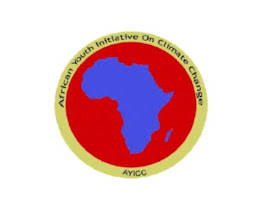UNFCCC PRESS RELEASE ON 'CANCUN AGREEMENTS'
UN Climate Change Conference in Cancún delivers balanced package of decisions, restores faith in multilateral process
(Cancún, 11 December 2010)
The UN Climate Change Conference in Cancún, Mexico, ended on Saturday with the adoption of a balanced package of decisions that set all governments more firmly on the path towards a low-emissions future and support enhanced action on climate change in the developing world.
The package, dubbed the —Cancún Agreements“ was welcomed to repeated loud and prolonged applause and acclaim by Parties in the final plenary.
Cancún has done its job. The beacon of hope has been reignited and faith in the multilateral climate change process to deliver results has been restored,“ said UNFCCC Executive Secretary Christiana Figueres. —Nations have shown they can work together under a common roof, to reach consensus on a common cause. They have shown that consensus in a transparent and inclusive process can create opportunity for all,“ she said.
Governments have given a clear signal that they are headed towards a low-emissions future together, they have agreed to be accountable to each other for the actions they take to get there, and they have set it out in a way which encourages countries to be more ambitious over time,“ she said.
Nations launched a set of initiatives and institutions to protect the poor and the vulnerable from climate change and to deploy the money and technology that developing countries need to plan and build their own sustainable futures. And they agreed to launch concrete action to preserve forests in developing nations, which will increase going forward.
They also agreed that countries need to work to stay below a two degree temperature rise and they set a clear timetable for review, to ensure that global action is adequate to meet the emerging reality of climate change.
This is not the end, but it is a new beginning. It is not what is ultimately required but it is the essential foundation on which to build greater, collective ambition,“ said Ms. Figueres.
Elements of the Cancún Agreements include:
- Industrialised country targets are officially recognised under the multilateral process and these countries are to develop low-carbon development plans and strategies and assess how best to meet them, including through market mechanisms, and to report their inventories annually.
- Developing country actions to reduce emissions are officially recognised under the multilateral process. A registry is to be set up to record and match developing country mitigation actions to finance and technology support from by industrialised countries. Developing countries are to publish progress reports every two years.
- Parties meeting under the Kyoto Protocol agree to continue negotiations with the aim of completing their work and ensuring there is no gap between the first and second commitment periods of the treaty.
- The Kyoto Protocol‘s Clean Development Mechanisms has been strengthened to drive more major investments and technology into environmentally sound and sustainable emission reduction projects in the developing world.
- Parties launched a set of initiatives and institutions to protect the vulnerable from climate change and to deploy the money and technology that developing countries need to plan and build their own sustainable futures.
- A total of $30 billion in fast start finance from industrialised countries to support climate action in the developing world up to 2012 and the intention to raise $100 billion in long-term funds by 2020 is included in the decisions.
- In the field of climate finance, a process to design a Green Climate Fund under the Conference of the Parties, with a board with equal representation from developed and developing countries, is established.
- A new —Cancún Adaptation Framework“ is established to allow better planning and implementation of adaptation projects in developing countries through increased financial and technical support, including a clear process for continuing work on loss and damage.
- Governments agree to boost action to curb emissions from deforestation and forest degradation in developing countries with technological and financial support.
- Parties have established a technology mechanism with a Technology Executive Committee and Climate Technology Centre and Network to increase technology cooperation to support action on adaptation and mitigation.
The next Conference of the Parties is scheduled to take place in South Africa, from 28 November to 9 December 2011.
About the UNFCCC
With 194 Parties, the United Nations Framework Convention on Climate Change (UNFCCC) has near universal membership and is the parent treaty of the 1997 Kyoto Protocol. The Kyoto Protocol has been ratified by 191 of the UNFCCC Parties. Under the Protocol, 37 States, consisting of highly industrialized countries and countries undergoing the process of transition to a market economy, have legally binding emission limitation and reduction commitments. The ultimate objective of both treaties is to stabilize greenhouse gas concentrations in the atmosphere at a level that will prevent dangerous human interference with the climate system

Comments
Post a Comment